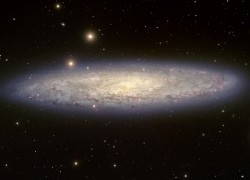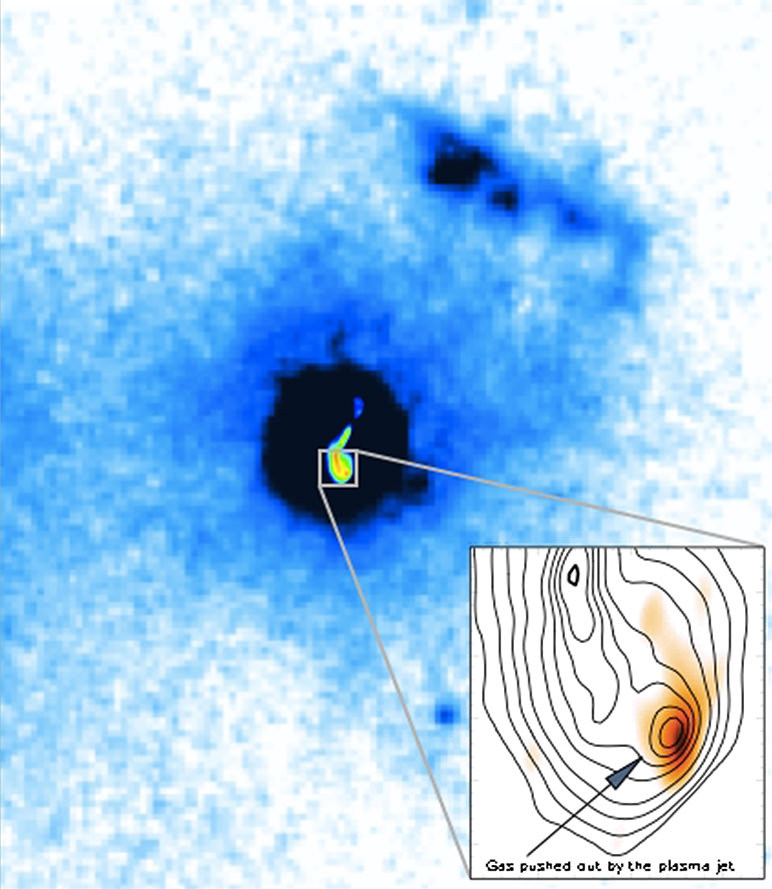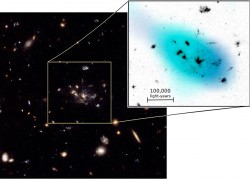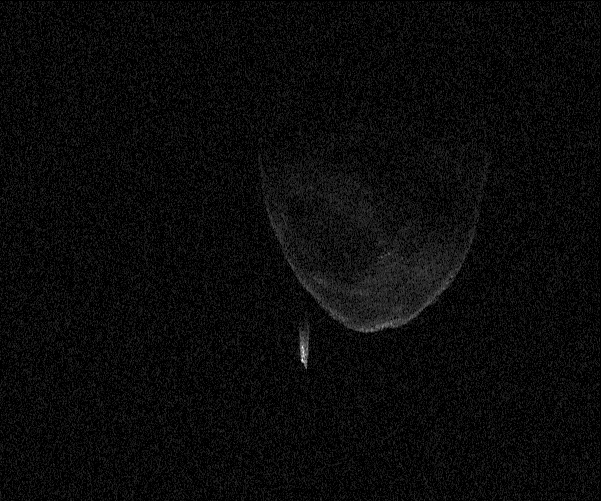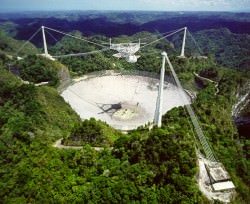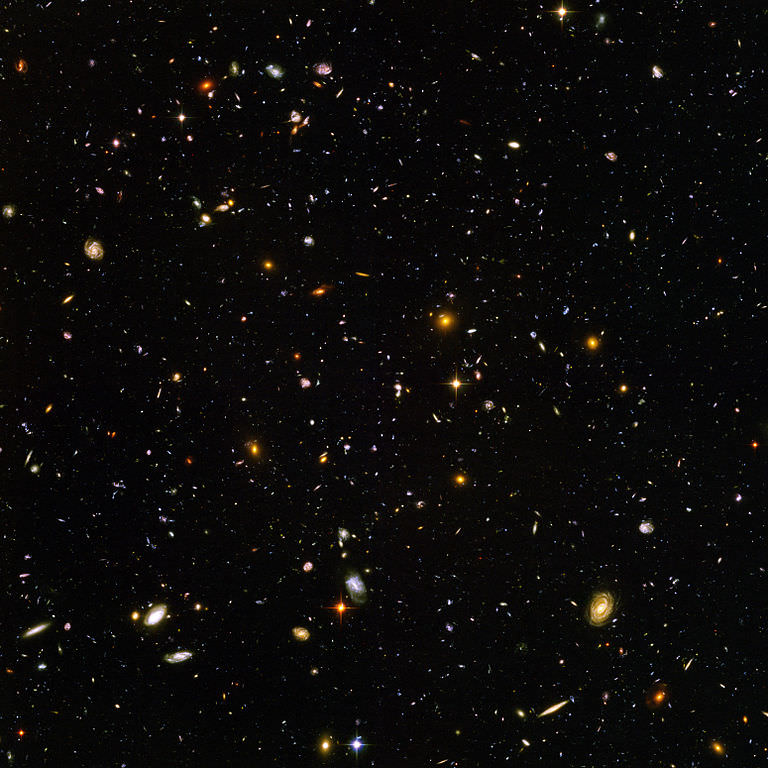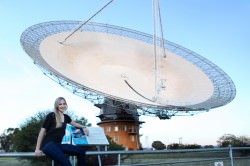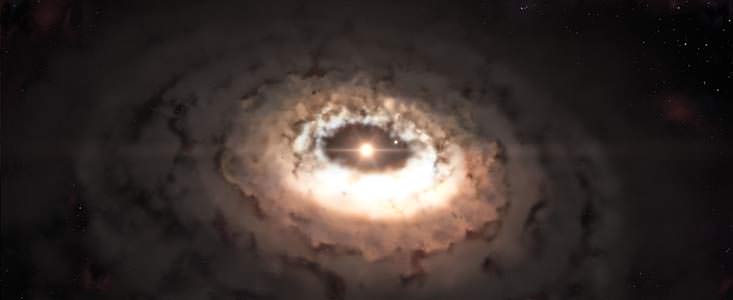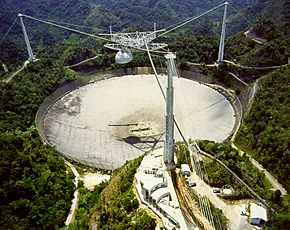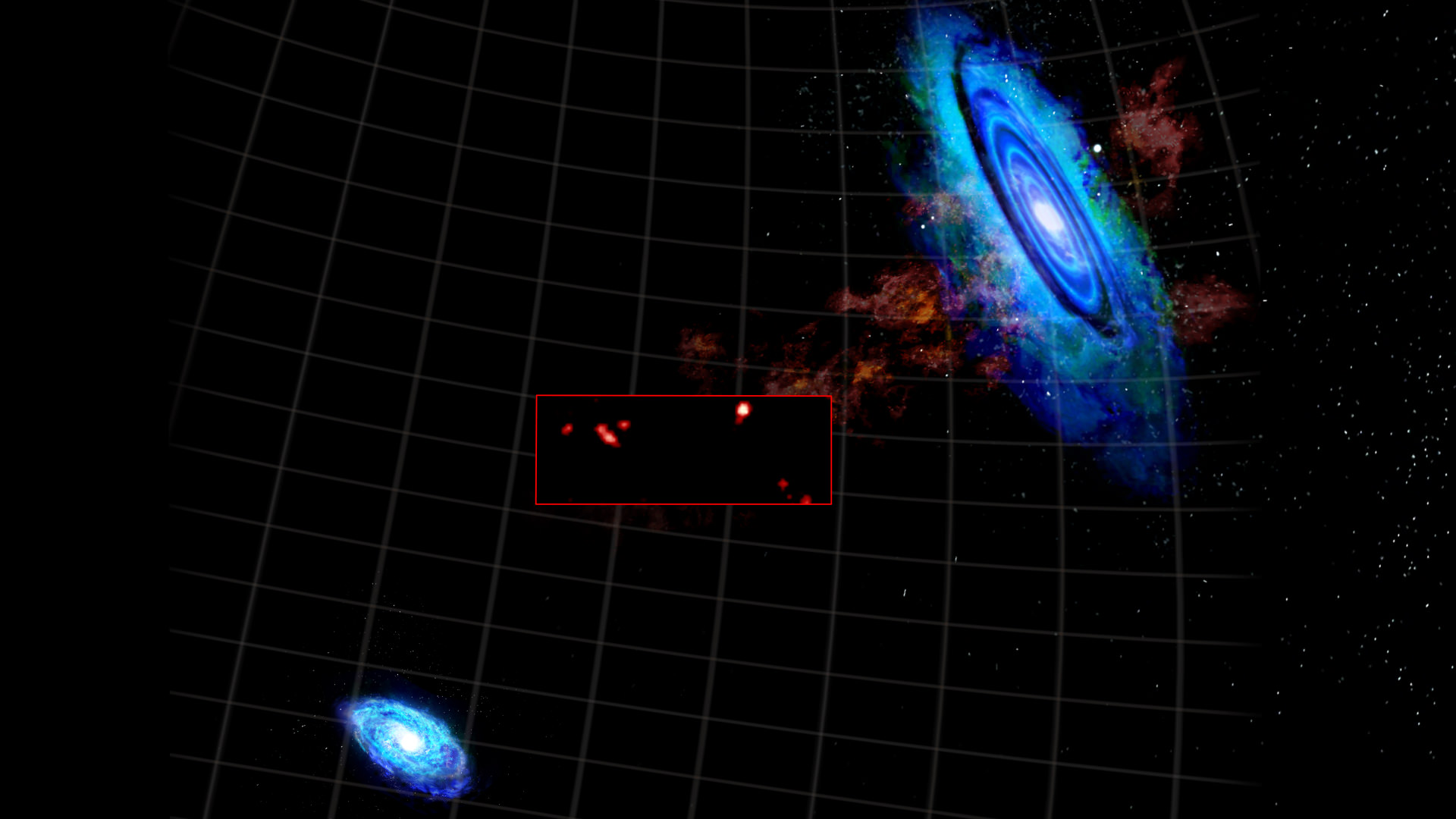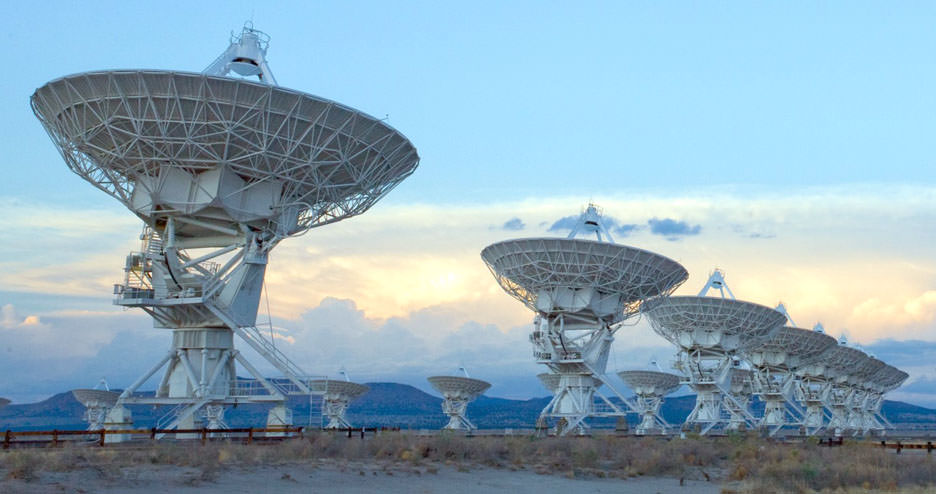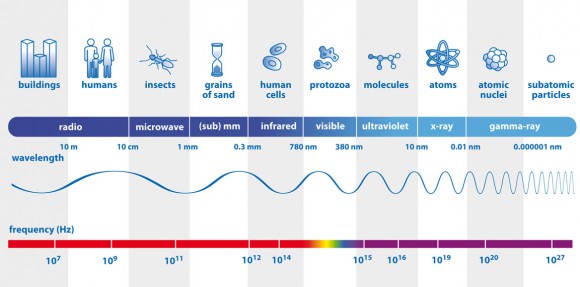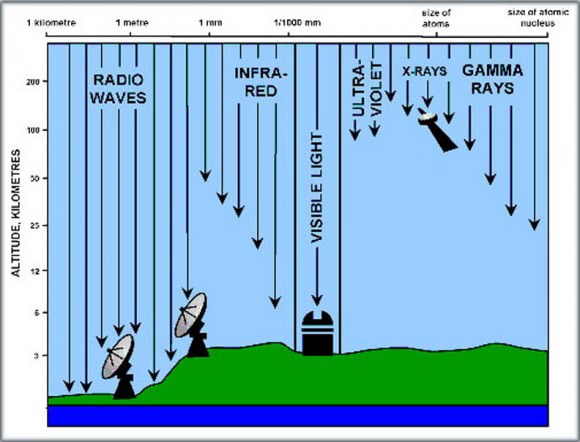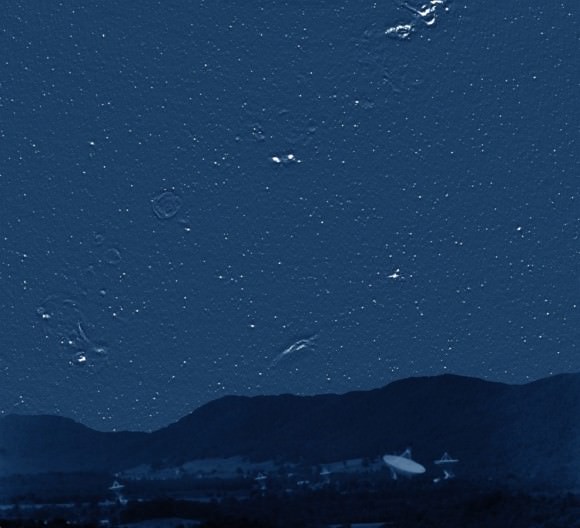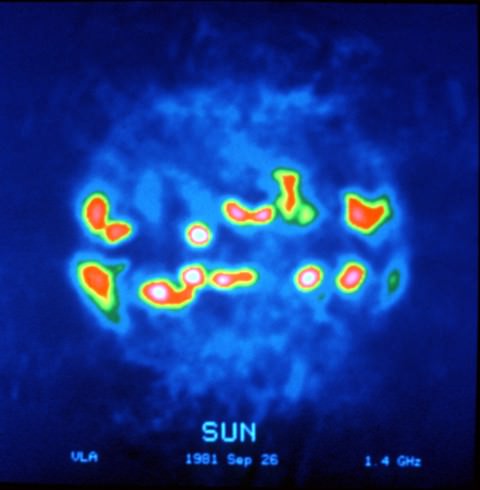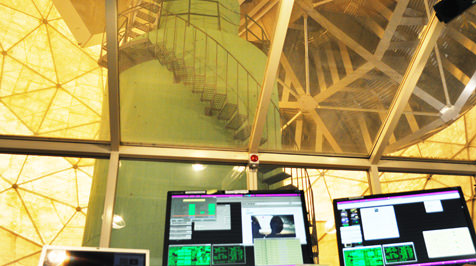“Ooompah, loompah, roopity rust… ALMA finds comets hiding in dust.” According to many studies over recent years, astronomers are aware planets seem to be everywhere around stars. However, just how these rocky bodies, including comets, are created is something of an enigma. Now, thanks to one sweet telescope, the Atacama Large Millimeter/submillimeter Array (ALMA), science has taken a big step forward in understanding how minuscule dust grains in a protoplanetary disk can one day evolve into a larger format.
A little less than 400 light years from Earth is a youthful solar system cataloged as Oph IRS 48. In images taken of its outer perimeters, astronomers have picked up a vital clue in its swirling masses of dust – a crescent-shaped region dubbed a “dust trap”. Researchers feel this area may be a protective cocoon which allows rocky formations to take shape. Why is such a region important? It’s the smash-factor. When astronomers try to model dust to rocky formations, they have found the particles self-destruct… either by crashing into each other, or being drawn into the central star. In order for them to progress past a certain size, they simply must have an area of protection to allow them to grow.
“There is a major hurdle in the long chain of events that leads from tiny dust grains to planet-sized objects,” said Til Birnstiel, a researcher at the Harvard-Smithsonian Center for Astrophysics in Cambridge, Mass., and co-author on the paper published in the journal Science. “In computer models of planet formation, dust grains must grow from submicron sizes to objects up to ten times the mass of the Earth in just a few million years. But once particles grow larger enough, they begin to pick up speed and either collide, sending them back to square one, or slowly drift inward, thwarting further growth.”
So where can a newborn planet, comet or asteroid hide? Nienke van der Marel, a PhD student at Leiden Observatory in the Netherlands, and lead author of the article, was using ALMA along with her co-workers, to take a close look at Oph IRS 48 and discovered a torus of gas with a central hole. This absence of dust particles was very different from earlier results picked up on ESO’s Very Large Telescope.
“At first the shape of the dust in the image came as a complete surprise to us,” says van der Marel. “Instead of the ring we had expected to see, we found a very clear cashew-nut shape! We had to convince ourselves that this feature was real, but the strong signal and sharpness of the ALMA observations left no doubt about the structure. Then we realised what we had found.”
A surprise? You bet. What the team uncovered was a region where large dust grains remained captive and could continue to gain mass as more and more grains collided and melded together. Here was the “dust trap” which theorists predicted.
Loading player…
So what makes it up? To keep the dust grains together and forming requires a vortex – an area of high pressure to protect them. To form this vortex, there needs to be a large object present, either a companion star or a gas-giant. Like a boat sluicing through algae-filled waters, the secondary object in the planetary disk would clear a path in its wake, producing the critical eddies and vortices needed to fashion the dust trap. While previous studies of Oph IRS 48 uncovered a rigid ring of carbon monoxide gas combined with dust, there was no observed “trap”. However, that doesn’t mean the observation was negative. Astronomers also uncovered a gap between the inner and outer portions of the solar system – a clue to the presence of the necessary large body.
The conditions were right for a possible dust trap. Enter ALMA. Now the researchers were able to see both the gas and larger dust grains at the same time. These new observations led to a discovery no other telescope had yet revealed… a lopsided bulge in the outer portion of the disk.
As van der Marel explains: “It’s likely that we are looking at a kind of comet factory as the conditions are right for the particles to grow from millimetre to comet size. The dust is not likely to form full-sized planets at this distance from the star. But in the near future ALMA will be able to observe dust traps closer to their parent stars, where the same mechanisms are at work. Such dust traps really would be the cradles for new-born planets.”
As larger particles migrate towards the areas of higher pressure, the dust trap takes shape. To validate their findings the researchers employed computer modeling to show that a high pressure region could arise from the motion of the gas at the opening edges. It matches with the observation of the Oph IRS 48 disc.
“The combination of modelling work and high quality observations of ALMA makes this a unique project”, says Cornelis Dullemond from the Institute for Theoretical Astrophysics in Heidelberg, Germany, who is an expert on dust evolution and disc modelling, and a member of the team. “Around the time that these observations were obtained, we were working on models predicting exactly these kinds of structures: a very lucky coincidence.”
“This structure we see with ALMA could be scaled down to represent what may be happening in the inner solar system where more Earth-like rocky planets would form,” said Birnstiel. “In the case of these observations, however, we may be seeing something analogous to the formation of our Sun’s Kuiper Belt or Oort Cloud, the region of our solar system where comets are believed to originate.”
Like that dream factory of our childhood, ALMA is still under construction. These unique observations were taken with the ALMA Band 9 receivers – European-made instrumentation which permits ALMA to deliver its sharpest, most detailed images so far.
“These observations show that ALMA is capable of delivering transformational science, even with less than half of the full array in use,” says Ewine van Dishoeck of the Leiden Observatory, who has been a major contributor to the ALMA project for more than 20 years. “The incredible jump in both sensitivity and image sharpness in Band 9 gives us the opportunity to study basic aspects of planet formation in ways that were simply not possible before.”
Original Story Source: ESO News Release. For further reading: NRAO News Release.
